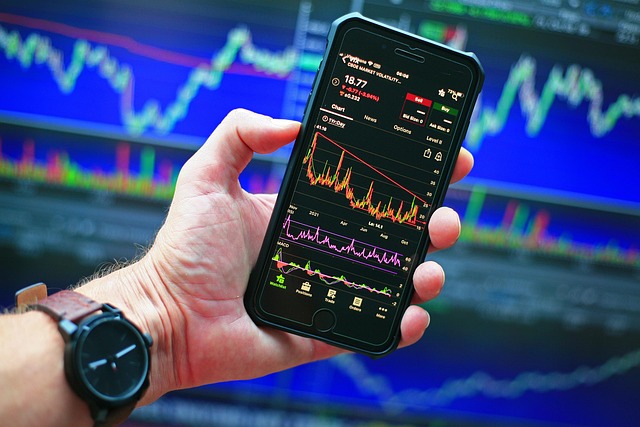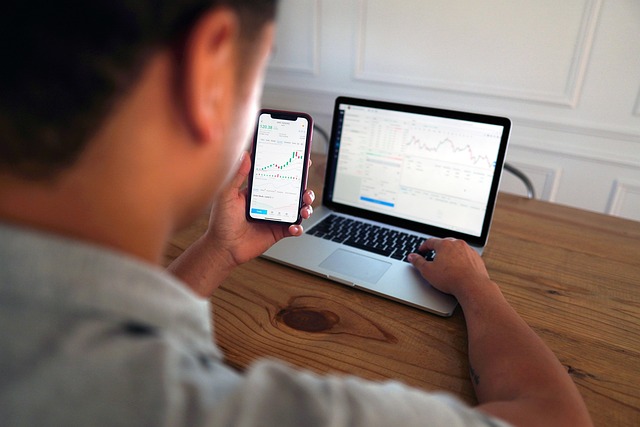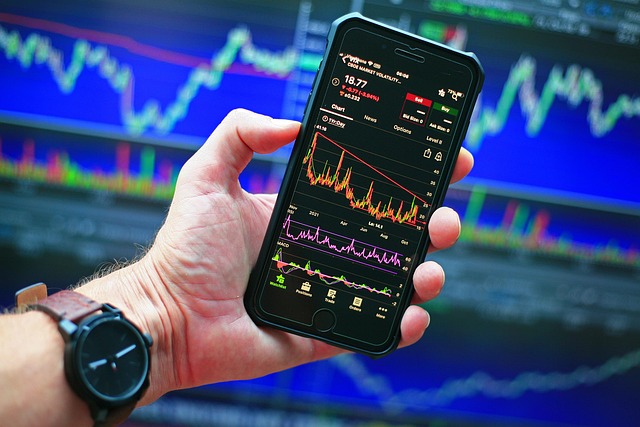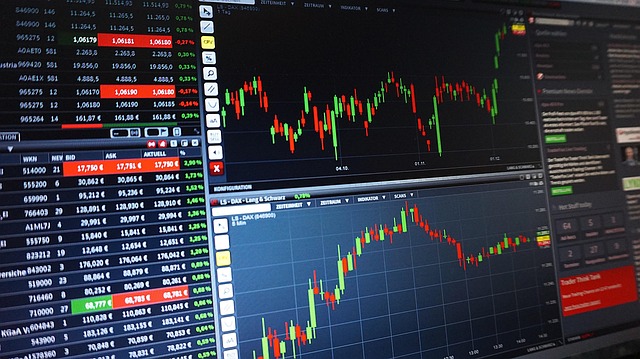How to Build Your Own Stock Trading Bot: A Complete Guide
Author: Jameson Richman Expert
Published On: 2025-10-21
Prepared by Jameson Richman and our team of experts with over a decade of experience in cryptocurrency and digital asset analysis. Learn more about us.
If you want to build your own stock trading bot, this comprehensive guide walks you step-by-step from strategy design to live deployment, covering data sources, broker APIs, backtesting, risk management, compliance, monitoring, and optimization. Whether you’re a developer, quant, or experienced trader, you’ll find actionable advice, example strategies, and recommended tools to create a reliable automated trading system.

Why build your own stock trading bot?
Automating your trading opens possibilities that manual trading cannot match: disciplined execution, rapid order placement, round-the-clock monitoring, and systematic risk control. Building your own stock trading bot also gives you full control over strategy logic, data choices, execution timing, and security. For traders who want to iterate quickly and maintain intellectual property, a self-built bot beats black-box services.
However, automation has downsides: bugs, overfitting, slippage, and regulatory responsibilities. Before you begin, understand both the technical and financial risks so you can build with safety and robustness in mind.
Core concepts and vocabulary
- Algorithmic trading: using code to implement buy/sell rules (see the Wikipedia overview on algorithmic trading for background).
- Backtesting: replaying historical data to measure strategy performance.
- Paper trading: running the bot in simulated mode to validate behavior without real money.
- Execution latency: time between signal generation and order fill—important for high-frequency strategies.
- Slippage and transaction costs: real-world effects that reduce theoretical returns.
High-level architecture of a trading bot
A typical stock trading bot has the following components:
- Data ingest layer: historical and real-time price feeds, fundamentals, news, alternative data.
- Signal engine: strategy logic that generates buy/sell signals.
- Risk manager: position sizing, stop-loss rules, portfolio constraints.
- Execution engine: interfaces with broker APIs to place orders.
- Backtester and simulator: validates strategies on historical data.
- Monitoring and logging: health checks, P&L tracking, alerts.
- Persistence layer: databases for logs, orders, and market data.

Choose a tech stack
Picking well-supported libraries and APIs accelerates development. Common choices:
- Language: Python is the de facto standard for quant development because of strong libraries (pandas, NumPy, SciPy) and community support. Other options include Java, C++, and JavaScript/TypeScript for event-driven systems.
- Backtesting frameworks: Backtrader, Zipline, and bt are popular Python options. For machine learning-based strategies, pair these with scikit-learn, TensorFlow, or PyTorch.
- Broker APIs: Alpaca (commission-free US equities), Interactive Brokers (IBKR) for broad market access, and TD Ameritrade/Schwab where available. Alpaca provides a straightforward REST and websocket API ideal for beginners.
- Data providers: IEX Cloud, Alpha Vantage, Tiingo, Polygon.io, and Yahoo Finance for free historical data. For institutional-quality data consider Bloomberg or Refinitiv.
- Deployment: cloud servers (AWS, GCP, Azure), or VPS providers for low-latency needs. Use containers (Docker) for reproducible deployments.
Step-by-step: how to build your own stock trading bot
1. Define your goals and constraints
Start by specifying the target market (US equities, ETFs, ADRs), strategy horizon (intraday, swing, position), risk appetite, capital, and performance goals (annualized return, max drawdown). Define constraints like maximum position size, max number of concurrent positions, and allowed exchanges.
2. Strategy selection and design
Choose a strategy that fits your horizon and data access. Examples:
- Trend-following: moving average crossover (e.g., 50-day vs 200-day), breakout systems.
- Mean reversion: Bollinger Bands, RSI oversold/overbought rules.
- Pairs trading: statistical arbitrage between correlated securities.
- News/alternative data: sentiment analysis from news feeds or social platforms.
- Machine learning: predictive models trained on historical features (use with caution to avoid overfitting).
Document the logic in plain language before coding: entry rule, exit rule, position sizing, risk controls. This human-readable spec helps avoid confusion during implementation.
3. Acquire and clean data
High-quality data is essential. For historical backtests, you need adjusted prices (for splits/dividends) and consistent timestamps. Sources include:
- Alpha Vantage (free APIs with rate limits)
- IEX Cloud (real-time and historical)
- Polygon.io (tick-level and aggregated data)
- Yahoo Finance (easy historical data for prototyping)
Data cleaning steps:
- Fill or remove missing timestamps consistently.
- Adjust for corporate actions (splits, dividends).
- Normalize time zones and trading calendars.
- Deduplicate tick data and handle outliers sensibly.
4. Backtesting with realistic assumptions
Backtest using realistic transaction cost models. Include commissions, bid-ask spread, and slippage assumptions. Use out-of-sample testing and cross-validation to reduce overfitting. Key metrics to evaluate:
- Annualized return (CAGR)
- Volatility and Sharpe ratio
- Max drawdown and drawdown duration
- Win rate and average win/loss
- Profit factor and expectancy
Run walk-forward analysis: optimize parameters on a training window, then test on the next period, and roll forward. This approximates real-world re-optimization and provides a better estimate of live performance.
5. Paper trading and simulation
Before committing capital, run the bot in paper trading mode for weeks or months. Paper trading exposes timing, API integration, and slippage issues. Many brokers (including Alpaca) provide a sandbox environment for paper trading.
6. Live deployment and execution
Transitioning to live trading requires hardened systems:
- Use robust error handling and retries in API calls.
- Implement a “kill switch” to stop trading automatically under abnormal conditions (e.g., connectivity loss, extreme drawdown).
- Run the bot in a monitored environment with logging and alerts.
- Prefer limit or smart-order routing strategies for execution-sensitive systems to reduce market impact.
7. Monitoring, logging, and continuous improvement
Continuous monitoring is critical. Track P&L, open positions, latency, and exceptions. Build dashboards or use tools like Grafana/Prometheus for metrics and alerts. Regularly review performance and retrain or adjust models when necessary.
Example: Simple moving average crossover bot (conceptual)
Overview: Buy when the short moving average (SMA20) crosses above the long moving average (SMA50); sell when SMA20 crosses below SMA50. Position sizing: fixed percentage of portfolio (e.g., 10% per trade).
- Fetch daily adjusted close prices
- Compute SMA20 and SMA50
- Generate signals when crosses occur
- On buy signal, compute number of shares based on available cash and risk limits
- Place limit orders and monitor fills
- On sell signal or stop-loss/target, close position
This strategy is easy to backtest and provides clear logic for debugging. Always test with transaction cost assumptions (e.g., $0.005/share slippage + commission).

Risk management and position sizing
Proper risk controls separate successful bots from failures:
- Max drawdown limit: stop trading or reduce risk if strategy exceeds a defined drawdown.
- Position sizing: fixed fractional, volatility-scaled, or Kelly-based sizing can be used. Most traders prefer conservative fractional sizing to minimize ruin probability.
- Per-trade stop-loss: absolute price stop or volatility-based stop (e.g., ATR multiple).
- Correlation controls: avoid concentrated bets in highly correlated names.
- Liquidity filters: avoid illiquid stocks with wide spreads or low daily volume.
Common pitfalls and how to avoid them
- Overfitting: avoid excessive parameter tuning. Use out-of-sample and walk-forward testing, and prefer simpler models when performance is comparable.
- Data snooping: don’t test many hypotheses on the same dataset without proper adjustments.
- Ignoring transaction costs: small strategies can be wiped out by commissions and slippage.
- Poor exception handling: unhandled exceptions in live trading can cause unintended positions. Implement retries and manual override functionality.
- Broker limitations: check API rate limits, order types, margin rules, and pattern day trader restrictions (see authoritative sources like FINRA for regulatory details).
Compliance, taxes, and legal considerations
Automated trading does not exempt you from market rules or tax reporting. In the U.S., be aware of the FINRA and SEC guidance. Day trading frequently can trigger the Pattern Day Trader (PDT) rule if you trade U.S. equities in a margin account; confirm your broker’s rules and minimum equity requirements.
Keep meticulous trading records for tax reporting and audits. If you run bots for others or provide signals, you may need to meet licensing or regulatory requirements—seek legal counsel if you operate beyond personal trading.

Security best practices
- Store API keys securely—use environment variables, vaults, or managed secret stores (e.g., AWS Secrets Manager).
- Rotate keys regularly and restrict IP access where possible.
- Deploy on secure, patched servers with firewall and monitoring.
- Encrypt logs that contain sensitive information and restrict access controls.
- Use multi-factor authentication on all accounts and consider hardware security modules (HSM) for production systems.
Scaling, latency, and operational considerations
If you plan to scale to many symbols or require ultra-low latency:
- Consider colocating near exchange gateways.
- Use event-driven architectures and message brokers (Kafka, RabbitMQ) to decouple components.
- Optimize data storage (columnar databases or time-series stores like InfluxDB) for quick retrieval.
- Profile code hotspots and minimize Python overhead where necessary (use compiled libraries or microservices in faster languages).
Advanced techniques and machine learning
Machine learning can enhance signal generation but carries added risk of overfitting. When using supervised learning:
- Carefully construct training and validation sets to avoid lookahead bias.
- Use feature engineering (lagged returns, volatility, momentum, seasonality).
- Prefer explainable models (tree-based ensembles) before trying black-box deep learning approaches.
- Always evaluate models on realistic, transaction-cost-inclusive simulated trading.

Monitoring and observability
Operational maturity requires observability:
- Collect metrics: order latency, fill rates, P&L per strategy, active positions.
- Centralized logging with retention policies for incident review.
- Alerting for exceptions, drift, degraded performance, or unexpected behavior.
- Regular audits: review trades, edge cases, and reconciliation between broker statements and internal logs.
Backtesting pitfalls — what to watch for
When backtesting, watch for:
- Survivorship bias: use datasets that include delisted securities to avoid inflation of returns.
- Lookahead bias: never use future information in historical decisions.
- Inconsistent price adjustments: ensure consistency for dividends and splits.
Useful resources and further reading
To expand your knowledge, consult both educational and practical resources: authoritative definitions on Wikipedia - Algorithmic trading, Investopedia tutorials, broker API docs like Alpaca’s documentation, and deep-dive industry analysis. For broader perspectives on automated trading bots (including crypto and forex), see resources comparing profitability, signals, and platform choices—these analyses can help you understand cross-market differences and pitfalls:
- Are Forex Trading Bots Profitable? — In-Depth Analysis
- Top Crypto Signals App for 2025 — Ultimate Guide
- What Trading Platform to Use — In-Depth Guide
- Best Cryptocurrency Price Prediction Website in 2025 — Analysis

Checklist: from prototype to production
- Document strategy specification (entry/exit/risk).
- Obtain quality historical data and clean it.
- Backtest with transaction costs, out-of-sample testing, and walk-forward validation.
- Paper trade long enough to capture different market regimes.
- Harden error handling, logging, and monitoring in code.
- Deploy on secured, monitored infrastructure and set alert thresholds.
- Keep records for compliance and taxes.
- Iterate, review, and maintain strong risk controls.
Frequently asked questions (FAQ)
How much capital do I need to start?
You can start with small capital for paper trading and modest live tests. If using U.S. brokerages with margin accounts, beware of the Pattern Day Trader rule requiring minimum equity (usually $25,000) for frequent day trading. Start small, prove the system, and scale conservatively.
Can I use the same bot for crypto and stocks?
Yes, but market structure differs. Crypto markets operate 24/7 with different liquidity and custody risks. For cross-market strategies, design exchange-specific execution logic and consider the unique slippage and regulatory environment—see comparative analyses of automated bots across asset classes for context.
Are trading bots profitable?
Automation alone doesn’t guarantee profits. Profitability depends on strategy edge, data quality, execution, and risk management. Many vendor promises of “guaranteed returns” are misleading—rigorous backtesting and realistic simulations are necessary to assess viability.
Final advice: iterate, stay humble, and prioritize safety
Building your own stock trading bot is a multidisciplinary project involving finance, software engineering, data science, and compliance. Start with small, well-documented experiments, emphasize robust testing and monitoring, and never neglect risk controls. As you gain experience, you can explore advanced strategies and scale gradually. Be skeptical of hyperbolic claims and ground decisions in reproducible analysis. For additional reading on trading platforms and signal services, consult the linked resources above to compare tools and approaches.
If you’re ready to begin, pick a simple strategy, set up a clean development environment, and run thorough backtests with realistic costs. Iterate from there—each cycle of testing and refinement makes your bot more reliable and closer to a production-ready automated trader.